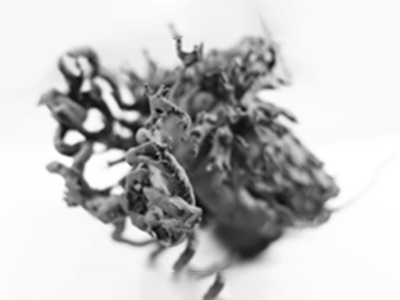Background
Pediatric Cardiac Surgery is the most demanding medical specialty. It needs to deal with delicate structures like the small heart of a newborn baby. The weight of a newborn can even reach 20 grams of a newborn's heart. The operation has brought many difficulties to such a small heart.

Like other common heart scanning methods, only when the heart is abnormal, it is possible to create heart abnormalities like other common heart scanning methods. In all these examples, even sub-millimeters can cause life and death. In order to increase the chance of survival, the surgeon needs to know as much as possible to decide whether to start surgery, and if so, how to proceed in the best way.
In this case, Kordian, a 3-week-old baby from Poland, suffered from a type of heart disease called traumatic rupture of the aorta. In this disease, the body's largest artery is torn or ruptured. This situation can be fatal, and for Kordian, his life is also threatened. Kordian's mother knew nothing about the disease, and the doctor and her mother had to quickly decide whether to perform surgery.

3D printing results proved to be the perfect solution to this problem. Cardiologists can print each heart and carefully observe abnormalities. They can even perform a simulated operation before the operation. Unfortunately, although the most common FDM printers are sufficient for daily use, this time, the technology is powerless. Doctors need a solution that can provide surgical accuracy. They must imitate every small vein and artery around the heart. For FDM, the veins are either too thin to be printed, or they are easily torn during post-processing due to the need for support.
SLS technology meets all requirements. This SLS 3D printing model can be used for planning of cardiac surgery and interventional treatment, especially for complex and rare congenital heart diseases, when the anatomical structure always varies from person to person.
It helps to plan the operation, thereby making the operation safer, simpler and shorter. Doctors perform operations on the 3D printed heart, and the success rate of the operation is higher, thus making the life of the patient better.

The surgeons decided to print Kordian's heart in order to better plan the operation. This excitement can be clearly seen on the SLS 3D printed model, and the minimum size of the heart is not a problem. This helps prepare for complex surgery. They connected the excited fragments of the aorta. Seeing this model, Kordian's mother can more easily understand how serious his condition is and how the operation will be performed. Thanks to this, the consent to the operation was more sober than when she only saw the defects on the screen.
Today, Kordian is 18 months old. His happy face and positive attitude towards the newcomer does not mean that the boy could not survive more than a year ago.
SLS 3D printing helps:
Establishing a 1:1 neonatal heart model to maintain the structure and relationship of different anatomical structures such as veins, trachea, or arteries, which cannot be achieved by other technologies.
Help students understand various heart disease planning and simulation upcoming procedures in the most intuitive way, thereby improving the survival rate of patients,
Explain heart disease to parents who don’t know about heart abnormalities.
![]() Tel:+86 135 7086 9158
Tel:+86 135 7086 9158![]() Tel:+86 135 7086 9158
Tel:+86 135 7086 9158


